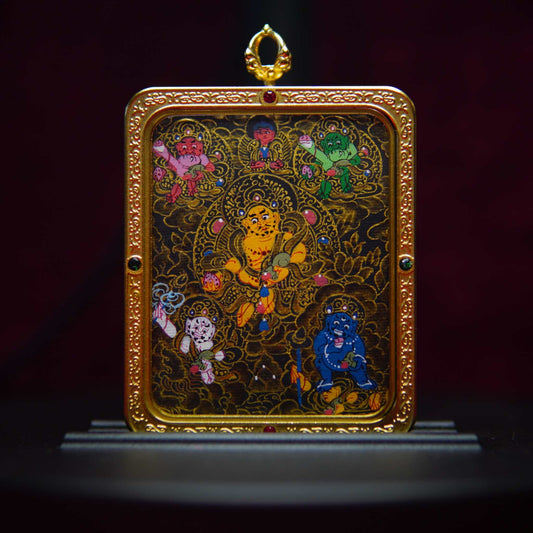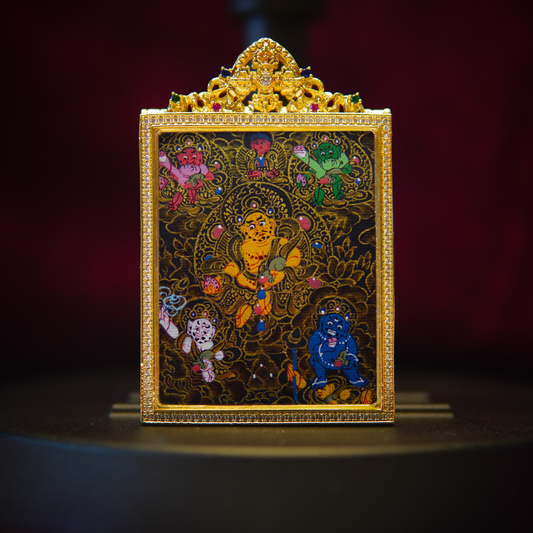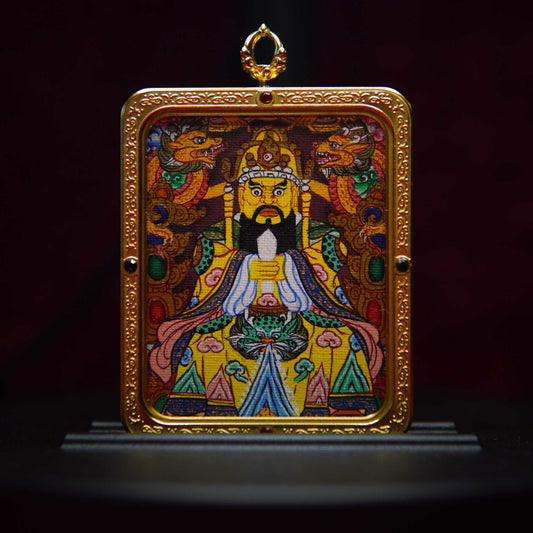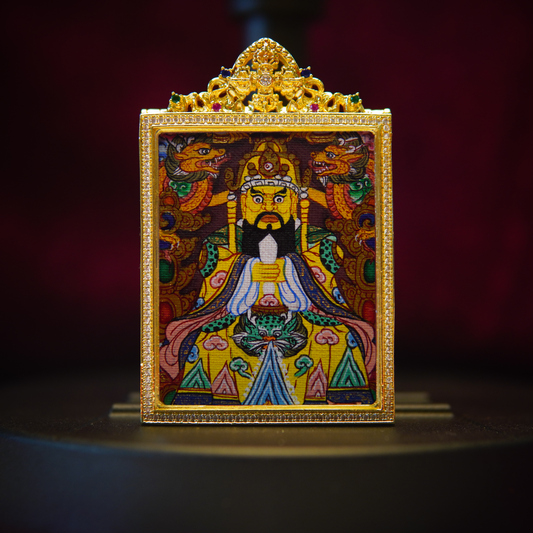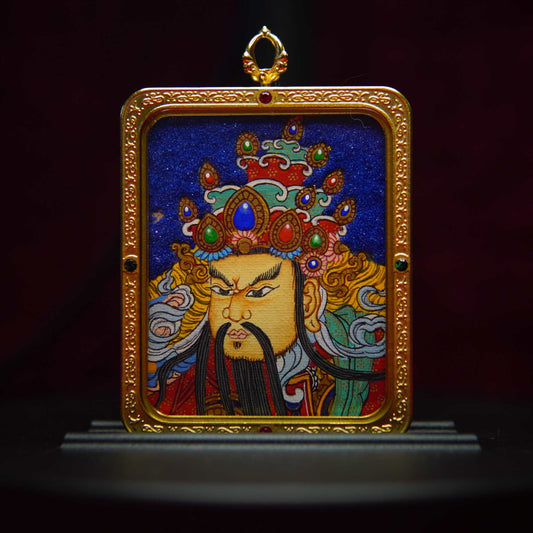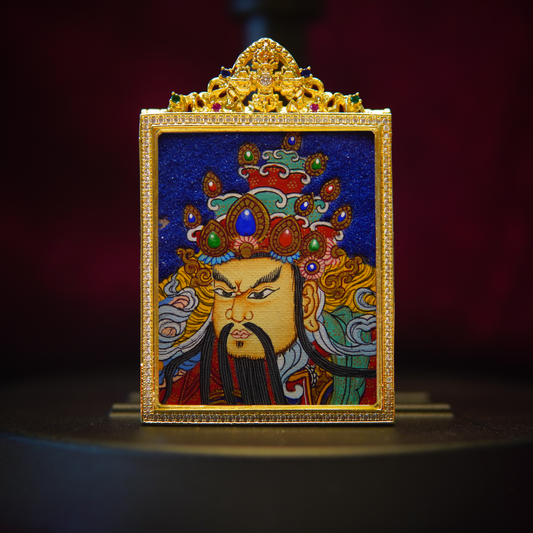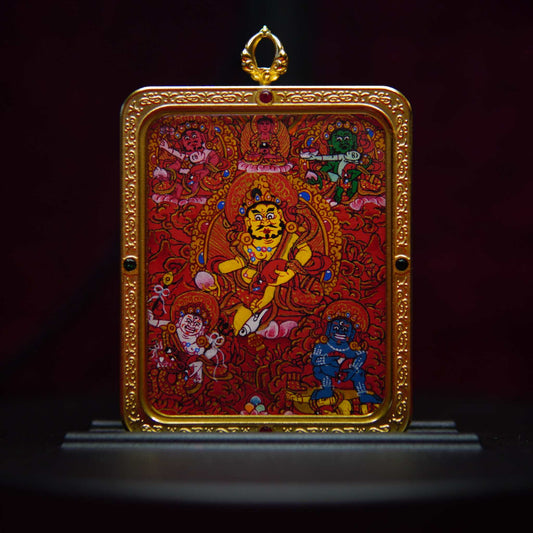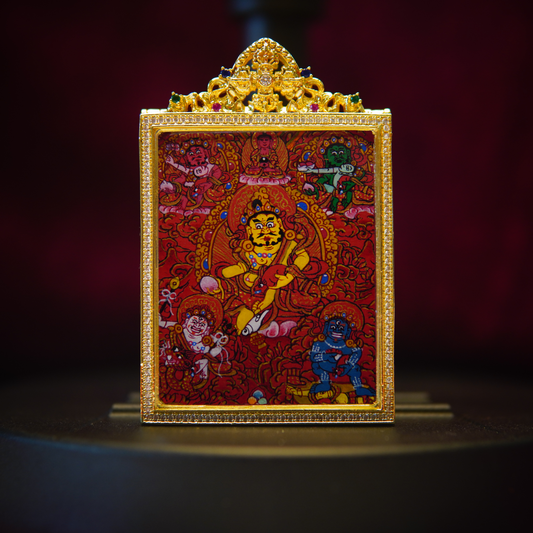Unlock Tranquility: Discover the Magic of a Buddha Pendant
TapitaThe Spiritual Significance of Buddha Pendants
In the realm of spiritual jewelry, the Buddha pendant stands as a beacon of tranquility and enlightenment. These exquisite adornments transcend mere aesthetic appeal, embodying profound philosophical principles and spiritual guidance. The allure of Buddha pendants lies not just in their visual elegance but in the centuries-old wisdom they represent, making them cherished possessions for Buddhist adherents and spiritual seekers worldwide.
Buddha pendants, particularly those featuring hand-drawn thangka artistry, serve as portable sanctuaries—miniature embodiments of enlightened consciousness that accompany the wearer through life's tumultuous journey. The meticulous craftsmanship involved in creating these pendants transforms them from simple jewelry pieces into sacred artifacts, carrying the essence of Buddhist teachings and the serene countenance of the Enlightened One.
The Historical Evolution of Buddha Amulets
The tradition of wearing Buddha imagery as protective amulets dates back to ancient Buddhist civilizations. Initially, these talismans were fashioned from clay tablets impressed with sacred imagery, reserved exclusively for monastic communities. As Buddhism traversed continents, the artistic expression of Buddha pendants evolved, incorporating regional aesthetic sensibilities while preserving their spiritual essence.
In Thai Buddhism, the "Phra Kruang" tradition emerged, where Buddha amulets became highly venerated objects believed to harbor supernatural protective qualities. Similarly, in Tibetan Buddhist practice, miniature thangka pendants developed as portable meditation aids, allowing practitioners to maintain spiritual focus during pilgrimages or daily activities.
Varieties of Buddha Pendants and Their Symbolic Meanings
The diversity of Buddha pendants reflects the multifaceted nature of Buddhist philosophy itself. Each variant portrays the Buddha in different mudras (hand gestures) and postures, each conveying specific spiritual attributes and blessings. Understanding these variations enables wearers to select pendants that resonate with their personal spiritual aspirations.
The Dharmachakra Buddha pendant, depicting the Buddha turning the Wheel of Dharma, symbolizes the dissemination of Buddhist teachings and is particularly auspicious for those seeking wisdom and intellectual clarity. Conversely, the Medicine Buddha pendant, recognizable by its azure hue and healing herbs held in hand, serves those in pursuit of holistic wellbeing and recovery from ailments.
Thangka Art in Pendant Form
Thangka art, traditionally painted on cotton or silk scrolls, represents one of Buddhism's most refined artistic traditions. When translated into pendant form, these meticulously hand-drawn depictions preserve the iconographic precision and spiritual potency of their larger counterparts. The miniaturization process requires exceptional skill, as artists must maintain proportional harmony and symbolic accuracy at a significantly reduced scale.
"A thangka pendant is not merely worn; it is carried as a personal shrine, a constant reminder of one's spiritual aspirations and the Buddha's eternal presence."
The elaborate composition of thangka pendants often includes not only the central Buddha figure but also celestial beings, symbolic elements, and sacred geometry, creating a comprehensive microcosm of Buddhist cosmology. This intricate iconography transforms each pendant into a meditation tool, allowing the wearer to contemplate the interrelated aspects of Buddhist teachings throughout daily activities.
The Transformative Benefits of Wearing Buddha Pendants
Adorning oneself with a Buddha pendant extends beyond aesthetic ornamentation—it constitutes a conscious spiritual practice with tangible psychological and energetic benefits. The proximity of sacred imagery to one's heart center creates an energetic resonance that many wearers report as palpably calming and centering.
The consistent visual and tactile connection with the pendant serves as a mindfulness anchor, gently redirecting attention to spiritual values amidst mundane concerns. During moments of distress or emotional turbulence, the pendant becomes a touchstone, facilitating a return to equanimity through its symbolic reminder of the Buddha's imperturbable serenity.
Cultivating Mindfulness Through Sacred Adornment
The practice of wearing a Buddha pendant can be elevated into a formal mindfulness exercise. Many practitioners develop rituals around their pendants—offering morning prayers while holding them, reciting mantras when touching them throughout the day, or engaging in visualization practices using the pendant's imagery as a focal point.
This intentional integration transforms the pendant from a passive symbol into an active spiritual technology, enhancing the wearer's capacity for present-moment awareness and compassionate action. The pendant becomes a conduit for embodying Buddhist virtues in everyday interactions, serving as a subtle reminder to approach situations with wisdom and empathy.
Selecting the Perfect Buddha Pendant for Your Spiritual Journey
Choosing a Buddha pendant involves more than aesthetic preference—it requires attunement to one's spiritual aspirations and energetic resonance with the specific depiction. Many practitioners describe experiencing an inexplicable attraction to particular Buddha forms, which often correlates with the spiritual qualities they most need to develop.
Quality considerations also play a crucial role in selection. Authentic hand-drawn thangka pendants carry the focused intention and spiritual discipline of their creators, imbuing the pieces with a vibration distinctly different from mass-produced alternatives. The materials used—whether precious metals, semiprecious stones, or traditional components like bone or wood—each carry unique energetic properties that interact with the wearer's own energy field.
Material Considerations and Energetic Properties
Different materials used in Buddha pendants contribute distinct energetic qualities to the wearer's experience:
- Silver: Enhances intuitive capacities and psychic receptivity
- Gold: Amplifies spiritual wisdom and solar, radiant energies
- Copper: Facilitates energetic transmission and healing currents
- Sandalwood: Deepens meditation and promotes tranquility
- Jade: Harmonizes heart energy and fosters compassionate action
The combination of materials, artistry, and specific Buddha depiction creates a unique energetic signature. Many practitioners report experiencing a subtle electromagnetic sensation when handling pendants that are particularly aligned with their spiritual needs—a phenomenon that transcends logical explanation yet guides many in their selection process.
Caring for Your Buddha Pendant: Practical and Spiritual Maintenance
A Buddha pendant, as both jewelry and sacred object, requires appropriate care to maintain both its physical integrity and spiritual potency. From a practical perspective, storage considerations prevent tarnishing and physical damage, while spiritual practices ensure the pendant remains energetically vibrant.
| Care Aspect | Recommendations |
|---|---|
| Physical Cleaning | Gentle cleansing with mild soap; avoid harsh chemicals or ultrasonic cleaners |
| Energetic Cleansing | Moonlight exposure, incense purification, or sound cleansing with bells/mantras |
| Storage | Silk pouches or dedicated altar space when not worn |
| Consecration | Periodic blessing by spiritual practitioners or through personal mantras |
Empowering Your Pendant Through Ritual
Many traditions recommend empowering Buddha pendants through specific rituals that activate their spiritual potential. These may include recitation of the appropriate mantras, visualization practices wherein the pendant is imagined illuminated with radiant light, or placement on home altars during meditation sessions to absorb the concentrated devotional energy.
Some practitioners also periodically bring their pendants to temples or monasteries for blessing by realized masters, believing this renews and amplifies the pendant's beneficial influence. These practices transform the pendant from a static object into a dynamic spiritual ally, evolving alongside the wearer's own spiritual development.
Frequently Asked Questions About Buddha Pendants
Spiritual seekers often raise insightful questions about Buddha pendants, reflecting their commitment to approaching these sacred objects with appropriate understanding and respect:
Is it respectful for non-Buddhists to wear Buddha pendants?
While Buddhist traditions generally welcome sincere appreciation of their symbols, wearing a Buddha pendant ideally reflects genuine reverence for what it represents rather than merely following fashion trends. Non-Buddhist wearers are encouraged to familiarize themselves with basic Buddhist principles and maintain respectful conduct while wearing these sacred symbols.
How does a thangka pendant differ from other Buddha pendants?
Thangka pendants distinguish themselves through their extraordinary level of iconographic detail and adherence to traditional proportional systems codified in Buddhist art traditions. Unlike simplified Buddha representations, authentic thangka pendants contain precise symbolic elements that create a complete visual dharma teaching, compressed into miniature form through remarkable artistic skill.
The Buddha pendant tradition continues to flourish in contemporary spiritual practice, offering a tangible connection to ancient wisdom traditions. As portable sanctuaries in an increasingly fragmented world, these sacred adornments provide spiritual nourishment, protective energy, and contemplative focus for practitioners navigating life's complexities. Whether chosen for their artistic beauty, symbolic significance, or energetic properties, Buddha pendants remain powerful vehicles for personal transformation and spiritual awakening.

